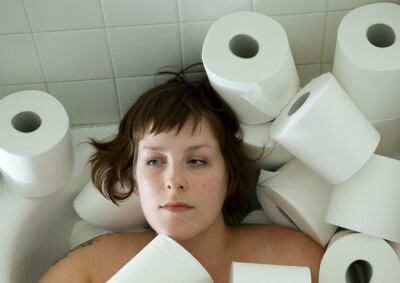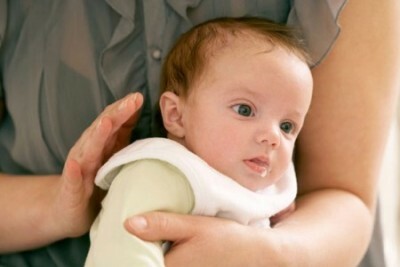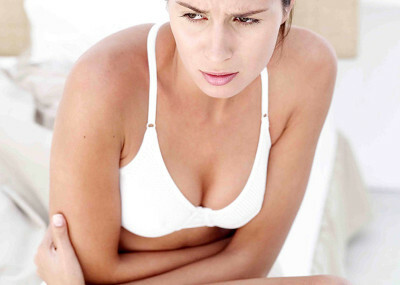1 The essence of the pathology of
Renal colic is a severe pain syndrome in the lumbar region, caused by the blockage of urine transport from the kidneys to the urinary bladder through the urinary canal. This pain syndrome usually has the nature of an acute attack. Overlapping or significant obstruction of the urinary passage leads to overflow of the cup-lohan cavity, which, in turn, significantly increases the hydrostatic pressure in the renal pelvis. Pathology leads to a violation of blood circulation in the kidneys and serious dysfunctions of them. Prolonged development of the process inevitably leads to ischemia of the renal tissues and their necrosis, development of the most dangerous complications( pyelonephritis, bacteremia shock, periphlogic phlegmon).

Recommended to read
- How to get rid of colic and why nothing helps
- Strong colic
- Cramping pain in the intestine
- Effective agent for gastritis and stomach ulcer
2 Etiology of
syndrome When there is renal colic, the causes can be of different nature. In general, the etiology of the syndrome is based on the appearance of a barrier in the upper urinary tract, blocking or sharply narrowing the excretory lumen of the ureter. Occlusion can be caused by concrement, mucus, pus, blood clots, stones, urinary salt conglomerates, caseous compounds, and may be a consequence of inflexion of the ureter, spasms and swelling of his or renal pelvis. In other words, the causes of renal colic are associated with pathologies leading to a sharp decrease in the patency of the urinary canal.
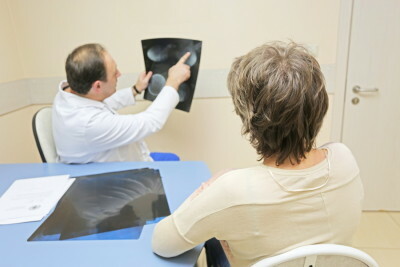 Etiology in women has some features. Renal colic can develop as a result of disorders in the genitals. To provocative reasons are: damage to the uterus tube, apoplexy of the ovary, pregnancy of an ectopic nature, twisting of the ovarian cyst leg.
Etiology in women has some features. Renal colic can develop as a result of disorders in the genitals. To provocative reasons are: damage to the uterus tube, apoplexy of the ovary, pregnancy of an ectopic nature, twisting of the ovarian cyst leg.
3 Urolithiasis
Renal colic is most often caused by the formation of stones in the kidneys and the upper part of the urinary canal. This pathology is explained by the presence of stone-forming components of urine, which include calcium salts, oxalates, uric acid and cysteine. The mechanism of the appearance of stones is associated with urine oversaturation with such components, which is why the nucleus of crystallization is formed. In the course of a number of processes, in the subsequent, various atoms are precipitated onto the nucleus, which give rise to stone-like structures of various types.
-
 IMPORTANT TO KNOW! Gastritis? Ulcer? To have a stomach ulcer not turned into cancer, drink a glass. ..Read the article & gt; & gt;
IMPORTANT TO KNOW! Gastritis? Ulcer? To have a stomach ulcer not turned into cancer, drink a glass. ..Read the article & gt; & gt;
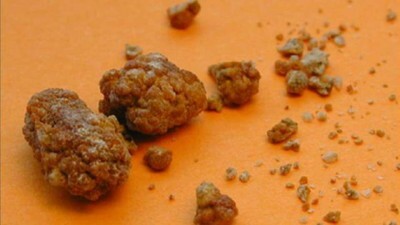 The main provocative reasons that increase the likelihood of the birth of stones are the warm moist climate, the composition of drinking water, the food ration( excessive consumption of pickles, smoked products, sweets, chocolate, parsley, sorrel and deficiency of useful microelements and vitamins), vitamin A deficiency, deficiency or excessivevitamin D content, dehydration caused by high evaporation through the skin, vomiting, chronic diarrhea, lack of fluid intake.
The main provocative reasons that increase the likelihood of the birth of stones are the warm moist climate, the composition of drinking water, the food ration( excessive consumption of pickles, smoked products, sweets, chocolate, parsley, sorrel and deficiency of useful microelements and vitamins), vitamin A deficiency, deficiency or excessivevitamin D content, dehydration caused by high evaporation through the skin, vomiting, chronic diarrhea, lack of fluid intake.
Internal anomalies are inherent in the birth of stones: congenital or acquired pathologies of the urinary tract( constrictions, bends, structural disorders), vesicoureteral reflux( urine return from the bladder to the ureter), infectious tissue damage, abnormal enzyme composition( eg, cysteine deficiency), gout, forced prolonged immobilization( immobilization), excessive vitamin C intake, sulfanilamide drugs intake, leukemia, sarcoidosis, bone cancer, Crohn's disease and Paget's disease, notwhich pathology of the gastrointestinal tract.
-
 Gastroenterologist. VAZHENOV: "I beg you, if you began to worry about abdominal pain, heartburn, nausea, do not do gas in any way. .."Read more & gt; & gt;
Gastroenterologist. VAZHENOV: "I beg you, if you began to worry about abdominal pain, heartburn, nausea, do not do gas in any way. .."Read more & gt; & gt;
The problem of detecting urolithiasis at an early stage is that it develops asymptomatically until an occlusion of the urinary tract is formed and renal colic does not occur. Such an exacerbation occurs unexpectedly with physical exertion, vibration, changes in body position, etc. The stone-shaped forms from the kidney move into the ureter, which has a small lumen, and clog its mouth. In this case, a large element can damage the vessels.
4 Diseases of the ureter's structure
Symptoms of renal colic in men and women may be due to worsening of the urinary passage due to bending deformity or a decrease in ureteral lumen. This phenomenon can be provoked by both congenital anomalies and acquired pathologies. Renal colic of this etiology is caused by the following phenomena: increased organ mobility due to renal ovulation, development of tumors of different nature, trauma, as a result of which fibrous tissue with low elasticity( especially dangerous cut, stabbed and gunshot wounds), retroperitoneal fibrosis( Ormond's disease)with the growth of fibrous tissue in the retroperitoneal region, congenital pathologies of the ureter when forming in the womb( pathological narrowing of the lumen, structural disturbances).
ADVICE FROM THE MAIN GASTROENTEROLOGIST
Korotov SV: "I can recommend only one remedy for the rapid treatment of Ulcer and Gastritis, which is now recommended by the Ministry of Health. .." Read the reviews & gt; & gt;
 Sometimes there may be an allergic edema of the ureter. This is facilitated by the use of such medications as codeine, iodine-containing drugs, some other drugs. Such a swelling can be strong enough to completely block the lumen.
Sometimes there may be an allergic edema of the ureter. This is facilitated by the use of such medications as codeine, iodine-containing drugs, some other drugs. Such a swelling can be strong enough to completely block the lumen.
5 Appearance of blood clots and pus
Obstacle to urine transport can create blood clots or pus when they enter the urinary canal. The main causes of the formation of blood clots: trauma to the kidney and urinary canals, causing internal bleeding;tumor formation in the renal pelvis or ureter;urolithiasis with the displacement of a large stone with damage to stenotic tissue.
 Renal colic in men and women due to purulent obstruction of the canal is caused by infectious disease of the renal pelvis with pyelonephritis or exposure to infectious microorganisms( bacteria, mycoplasmas, viruses, fungi).The main pathogens that can cause pathology are staphylococci, which are entered into the kidneys by blood or lymph from chronic purulent foci;Escherichia coli, penetrating from the lower pathways into the bladder, and then the kidneys;Pseudomonas aeruginosa, protei( most often recorded during medical events). The development of infections is accelerated by factors such as hypothermia, uncontrolled intake of certain drugs, diabetes mellitus, the presence of chronic abscesses.
Renal colic in men and women due to purulent obstruction of the canal is caused by infectious disease of the renal pelvis with pyelonephritis or exposure to infectious microorganisms( bacteria, mycoplasmas, viruses, fungi).The main pathogens that can cause pathology are staphylococci, which are entered into the kidneys by blood or lymph from chronic purulent foci;Escherichia coli, penetrating from the lower pathways into the bladder, and then the kidneys;Pseudomonas aeruginosa, protei( most often recorded during medical events). The development of infections is accelerated by factors such as hypothermia, uncontrolled intake of certain drugs, diabetes mellitus, the presence of chronic abscesses.
6 Clinical picture of the disease
When there are renal colic, the symptoms in men and women largely coincide and have several characteristic manifestations. The following main symptoms are distinguished: severe pain, changes in the volume and composition of urine, nausea, vomiting and worsening of gas withdrawal, hypertensive signs, disturbance of the heart rhythm, chills.
 Renal colic, the symptoms of which are clearly expressed, primarily, are evaluated according to the main symptom - pain syndrome. Sharp unbearable pain occurs unexpectedly in the lumbar region, and, regardless of the location of the human body, time of day and year. The following categories of pain syndrome are distinguished: pain with irradiation to the navel and lateral area and the return of pain to the inguinal zone and the surface of the thigh. When colic develops in the pre-bladder zone, the symptoms in men are presented in the form of pain in the head of the penis, and in women - in the region of the clitoris and vaginal entrance.
Renal colic, the symptoms of which are clearly expressed, primarily, are evaluated according to the main symptom - pain syndrome. Sharp unbearable pain occurs unexpectedly in the lumbar region, and, regardless of the location of the human body, time of day and year. The following categories of pain syndrome are distinguished: pain with irradiation to the navel and lateral area and the return of pain to the inguinal zone and the surface of the thigh. When colic develops in the pre-bladder zone, the symptoms in men are presented in the form of pain in the head of the penis, and in women - in the region of the clitoris and vaginal entrance.
When renal colic develops, the symptoms of the pain syndrome are permanent. Attempts to relieve pain by changing the position of the body do not bring success. The duration of a pain attack can be different: in children, usually 12-20 minutes, for women and men - from 1-2 hours to 2-3 days. It should be taken into account the fact that blocking urinary excretion from the kidney within 22-25 hours leads to reversible damages, and for 6 or more days irreversible functional and structural lesions can develop.
Renal colic is accompanied by another important symptom - a change in the volume and composition of urine. In the urine can be found salts, blood, pus. Characteristic violations of the process of urination: pain when urinating;frequent urge to urinate( blockage in the pre-bladder zone);a sharp decrease in the volume of urine.
7 Methods of treatment
When sudden and sudden renal colic has manifested itself, treatment should be performed in the hospital, but before the doctor comes, first aid is provided to deal with the symptoms of the attack. The main method of treatment is drug therapy. An important place is the optimization of nutrition and therapeutic diet.
 First Aid Assistance
First Aid Assistance
If an obvious manifestation of an attack of pathology is necessary, call an ambulance. Before the arrival of the doctor, first aid is provided in the following amount:
- Taking a hot bath. Relieves muscle spasms, reduces pain, dilates blood vessels.
- Application of a local heat source( hot water bottle with hot water on the waist or abdomen).
- Reception of antispasmodics( No-shpa, Drotaverin( usual dose 160 mg)).
- Taking painkillers. Apply cautiously, because with pain in the right side there is a probability of diagnosing an acute attack of appendicitis. You can take Ibuprofen, Paracetamol, Baralgin, Ketanov.
8 Drug therapy
The following groups of drugs are prescribed for basic drug therapy: painkillers;antispasmodics;antiemetic drugs;drugs to reduce pressure inside the renal pelvis. Non-steroidal anti-inflammatory drugs( Ketorolac, Diclofenac), painkillers of non-narcotic type( Paracetamol, Baralgin), analgesics of narcotic type( Tramadol, Omnupon, Morphine, Codeine), local anesthesia( Lidocaine, Novocaine) are used as anesthetic agents. 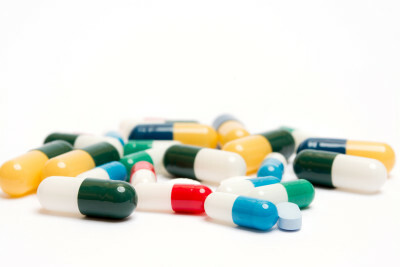 Treatment with spasmolytic drugs involves the use of myotropic antispasmodics such as Drotaverin, Papaverin and M-cholinolytics( Atropine).Renal colic is also treated by prescribing antiemetics( Metoclopramide) and drugs to reduce urine production( Desmopressin).
Treatment with spasmolytic drugs involves the use of myotropic antispasmodics such as Drotaverin, Papaverin and M-cholinolytics( Atropine).Renal colic is also treated by prescribing antiemetics( Metoclopramide) and drugs to reduce urine production( Desmopressin).
If you need to dissolve urinary stones, tools such as potassium citrate and sodium bicarbonate are used.
9 Diet
In the treatment of renal colic, certain requirements must be met when preparing a diet. It is recommended that the following rules be fulfilled:
- Providing enhanced drinking regimen. Drinks are allowed only without gas, a decoction of pharmacy chamomile and dogrose in the amount of up to 3 liters per day is desirable.
- Exclusion from the diet of animal fats, mushrooms, legumes, meat rich broths, smoked meats, canned goods, salt, marinades, garlic, mustard, onion, cocoa, chocolate.
- When detecting oxalate-type stones, spinach, sorrel, lettuce, legumes, whole milk, carrots, and potatoes should be excluded.
- With stones of the urate type, consumption of meat and offal, chocolate is reduced.
- If there are phosphate stones, milk, fruits( excluding citrus fruits), berries, vegetables are consumed less, but you can add fish, meat and vegetable fats.
Renal colic is a very dangerous pathology that, if not taken timely, threatens serious complications. When the first obvious signs of an attack appear, it is necessary to call a doctor and provide first-aid. Basic therapy is usually performed in a stationary setting.
- 1 The essence of the pathology
- 2 Etiology of the
- 3 syndrome Urolithiasis
- 4 Diseases of the ureteral structure
- 5 Appearance of blood clots and pus
- 6 Clinical picture of the disease
- 7 Treatment methods
- 8 Medication therapy
- 9 Diet
Renal colic refers to quite dangerous pathologies that are dangerous for human health and life with their complications. It, in essence, is not an independent disease, but is an acute manifestation of various pathologies. The attack of renal colic requires urgent hospitalization, since it is fraught with serious consequences. The disease can affect both men and women, and when renal colic is manifested, the symptoms are very painful and dangerous. At the same time, the signs of pathology are very easily confused with other diseases, which requires a thorough examination to establish an accurate diagnosis.
Do you have gastritis?
GALINA SAVINA: "How easy is it to cure gastritis at home for 1 month. A proven method is to write down a recipe. ..!"Read more & gt; & gt;

